Two days ago, we enjoyed hiking in the mountains and today we discuss back and forth about the weather on the next passage… the ups and downs of cruising life. For more details, keep reading.
As Maarten mentioned in the last blog, we went from Horta to the island of Sao Jorge. Our first impressions upon entering the harbour in the island’s capital Velas were correct: the island (total population: 8000 inhabitants) is another one of these gems: green, rough, full of flowers! We spent three wonderful days on the island: we jumped on the backseat of the car which was organized by our friends from Win2Win, visited a little cheese factory, hiked up and down steep cliffs and did some “buy-what-you-can-before-you-get-to-more-expensive-supermarkets”.
Sao Jorge is also described as the “whale island”. Not because whaling would have been particularly strong here – in fact it didn’t seem to be. Rather, it is shaped like a big whale. From North to South, it stretches only a few miles. However, from NW to SE, the island is 54 miles long, and therefore, it looks like the back of a massive whale – only that this mammal’s back would look strangely uneven due to the chain of hills (extinct volcanoes) that form the islands “spine”. The volcanic origin of the hills is clearly visible until today: in the past, lava would flow fast down the sides of the volcanoes, leading to steep hills on the North and South coast. In addition, lava rocks would built up and form some sort of low lying platform just a few meters above sea level at the bottom of the steep hills. These “platforms” are called “Fajas” in Portuguese. The platforms are high enough not to be affected by the seawater; at the same time, the location just above sea level and at the bottom of massive cliffs forms a warm and humid micro climate which allows for the production of various sorts of fruits and vegetables, including species which one would rather expect in the tropics (bananas, coffee, etc).
As a result of this favourable climate, the “fajas” have long been used for agricultural purposes. The only problem: access. In order to find ways down the steep volcanic slopes, it required engineering talent to build steep, winding roads, or – where the latter wasn’t possible, strong donkeys to find a way down even steeper paths. In the former case, the EU seems to be strongly involved in funding the maintenance these roads leading to small villages which seem to be mainly home to summer houses of Azorians living abroad today. In the latter case, the former donkey paths have been transformed into hiking paths with perfect sign posting – equally with EU money as we could see on the flyers distributed by the tourist information
The EU’s funding couldn’t be invested better: the fajas are beautiful locations, be it for agricultural production, coastal restaurants, natural swimming pools among lava rocks, or hiking as can be seen from the pictures below.

Faja d’Alem, this wire pulled with part of a motorcycle motor is the only way to get heavy things down to and up from the bottom
A highlight for us was the friendly reception we got during our hike into the faja d’Alem, only accessible through a very steep path. While we were wandering through the village (nowadays populated during summer weekends), people sitting in one of the houses waved to us and invited us to come in. A couple, both in their 70s, offered us homemade wine (similar to very young wine served in the “Heurigen” in Austria) and sweet bread. Unfortunately, communicated was very limited because they only spoke Azorean Portuguese, not really our field of expertise. Things got a tiny bit better when their daughter who seemed to understand my Spanish and herself spoke a type of Portuguese which we could somehow decipher joined the conversation. She even offered us to take some of the massive zucchinis the family had been growing in their garden.
After the second glass of red wine, we somehow managed to climb up the 400m high cliffs – not without considerable sweating and pulse rates resembling that of sitting in an overheated sauna… Unfortunately, communication hadn’t been good enough to explain to the friendly owners of the house that the second glass of wine might not be particularly helpful to continue our hike. Or at least, for the locals – no matter what weight and age they are – the consumption of wine ahead of a hike doesn’t seem to constitute a problem… After another three hours of hiking, another friendly local responded to my lifted up thumb, stopped his car along the road and and drove us back into the direction of Velas where we spent a relaxing evening on board.
The next day, we focused on the preparation of our upcoming trip to Ireland. Apart from cleaning the boat and getting some more washing done, we did some buy-what-you-can-before-you-get-to-more-expensive-supermarkets”. This means buying things that you think are cheaper (and/or better quality) where you are than where you will be next. Following the advice of our Irish friends from Selkie, we set off to buy larger portions of Portuguese (even Azorean) cheese and wine given that we do expect considerably higher price levels further North. Interestingly, the cheese production on the Azores, namely Sao Jorge, is said to date back to the immigration of immigrants from the “Low countries” (nowadays the Netherlands) who brought the recipes with them when they set off from war-torn mainland Europe to a new life in the Azores several centuries ago. No wonder that the cheese passed Maarten’s (very high) standards for good cheese.
Yesterday, we arrived to the city of Angra do Heroismo on the island of Terceira, a 50 miles trip from Velas in Sao Jorge. Angra is the historic capital of the Azores and during these days, it represents the home of a one-week festival organized to the honour of the Saint St. John (Sanjoanina) around the 24th June. In light of this, the harbour is known to be completely full with visiting cruisers and locals around those days. However, we were hopeful to get a space after the very kind harbour master in Sao Jorge called his colleague for us and received a positive answer via the phone. Our positive thinking came to an abrupt halt when we called the harbour master to ask for “our spot” after ten hours on the water and at 7:00pm. “We are full”, I heard through our VHF radio. Maybe it was my shocked tone or my persistence on the fact that in Sao Jorge, we had been told that there would be a spot. After a few minutes, he told us “come in to the reception pontoon and we will see what we do”. Again, our motto “alles komt goed” seemed to be true: the harbour master found us a spot. Ojalá got a beautiful spot in the middle of local small sailing and fishing craft, all between 4-7 meters long. Attaching a stern line has resulted slightly challenging because the side pontoon (no pillars in the back) doesn’t even reach the height of the cleat at the centre of our boat. But for now, the wind is coming from the front so we cannot complain.
The Sanjoanina festival seems to unite everything that one can imagine for a traditional festival: parades of costumed and dancing people (old and young), sale of traditional food, handcraft, and cheap drinks, exhibitions, bike races, boating excursions, concerts and even bull fights/races. During the two days we have been here, we have only actively participated in a small part of all these activities. For others, we didn’t have to do anything. A couple of hours after we went to bed around midnight, life music on a stage about 200 meters from our spot in the marina filled the air all over the harbour . We might have enjoyed this free of charge entertainment in other circumstances; at this time of the day I opted for ear plugs…

Long rows of chair standing ready along the sides of the streets for people to watch the dancing groups
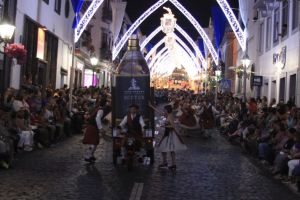
for some reason Scottish Whiskey and dancers made it into the parade – let’s see if we still find some “originals” later on our trip
Yesterday was supposed to be the last preparatory day as we had planned to head off to Ireland tomorrow. But a last look at the weather charts in the afternoon (after we had done all the shopping) mixed up our plans. A chain of low pressure systems moving by seems to mass up the weather more than we still expected 24 hours earlier. We also heard from other boats which had planned to leave today that they were having second thoughts. After a long debate (yes, two people on one boat is enough to have two different opinions!), it seems that we might give tomorrow’s departure a pass. Fingers crossed, we are able to leave soon – we both do not really feel like repeating the 3 ½ weeks waiting odyssey we had in the Bahamas. Moreover, we know that a couple of boats who left last week in a period without much wind had to motor big parts of their trip to England. As for us, the 1000nm we motored from Bermuda to the Azores have been more than enough – we are clearly hoping for some nice sailing now! But then again, the weather is the most important factor to take into account for cruising and passage planning. When it changes we need to change our plans with it. And now it is up to us to keep believing in our own motto – alles komt goed…
More news when we have a new departure date.

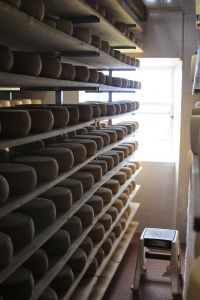


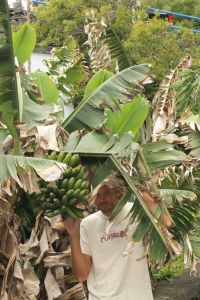

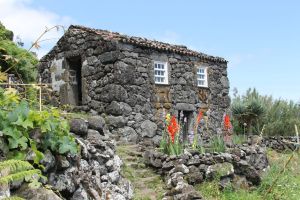
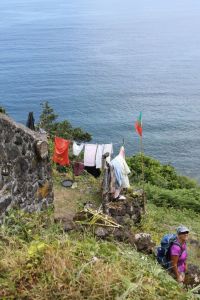

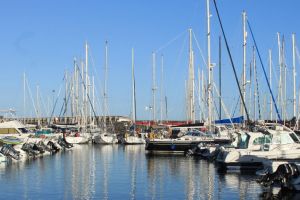

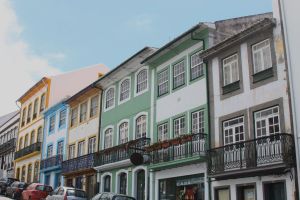

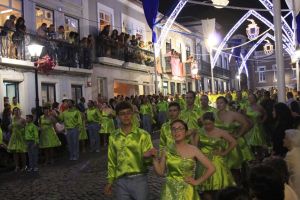
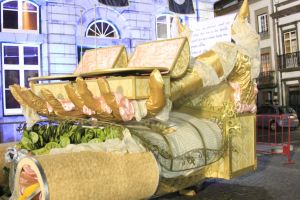
Wir haben große Lust, diese tollen Inseln alsbald zu bereisen nach Euren tollen Bildern und Berichten!!
Fingers crossed dass der Absprung bald möglich ist.
Lg Karin und Franz